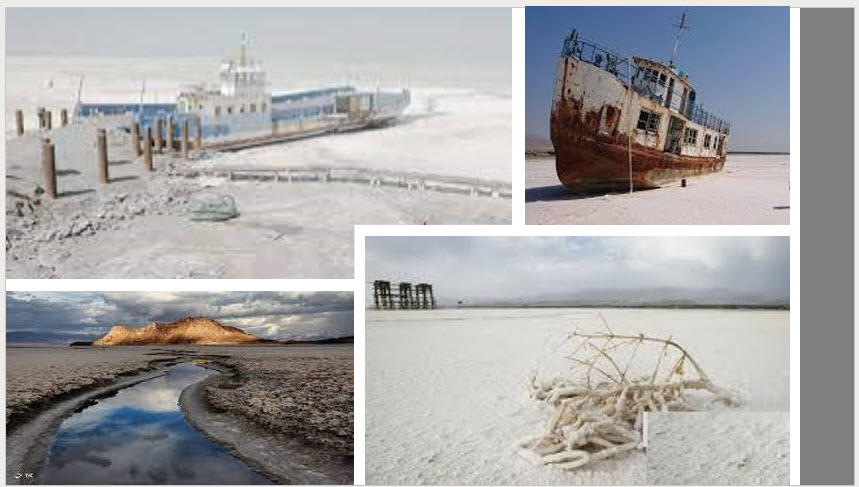
Recent satellite images from Iran’s state-run newspaper, Etemad, have unveiled a distressing reality: Lake Urmia, once celebrated as the world’s sixth-largest saltwater lake and Iran’s largest internal lake, is on the verge of an irreversible ecological catastrophe.
Over the last year, this environmental marvel has experienced a dramatic 80% reduction in water volume, leaving a scant four percent of its original expanse. This dire situation has ignited debates and conflicting statements, underscoring the looming ecological, social, and economic consequences.
These latest satellite images, spanning from November 2022 to November 2023, paint a stark picture of Lake Urmia’s condition. The once-expansive water body has shrunk from 878 square kilometers to a mere 170 square kilometers. This stark transformation contradicts the water industry spokesperson’s denial of the lake’s desiccation in September of the previous year, revealing a reality that official statements have sought to mask.
A report from the Remote Sensing Research Center at Sharif University of Technology, titled “Analysis of the Level, Surface, and Volume of Lake Urmia Using Satellite Images,” provides an in-depth analysis of the lake’s changes from 2014 to 2023. In November 2014, the lake’s water surface was recorded at 693 square kilometers, signifying a drastic 97% decrease over 25 years. The authors of the report express little hope for the lake’s revival, attributing the decline to mismanagement and insufficient funding.

Social media videos show Lake Urmia morphing into a vast salt marsh, raising alarm bells.
Despite optimistic projections from Ali Selajgeh, the head of Iran’s Environmental Protection Organization, the report’s authors caution against underestimating the far-reaching implications of the lake’s deterioration. They highlight potential health hazards, social unrest, economic fallout, and environmental damage, particularly the transformation of the dry lakebed into a major source of dust dispersion.
Isa Kalantari, a former head of the Environmental Protection Organization, predicts dire outcomes if the lake dries up completely. He forewarns that residents of Tabriz might have to evacuate within a decade, with the salt dust affecting areas up to 400 km away.
The crisis has prompted legal action by the Association of Justice Lawyers of West Azarbaijan Province. They are challenging the activities contributing to the lake’s drying, highlighting issues like neglect, water resource destruction, unauthorized agricultural practices, and the lack of modern agricultural planning.

Public unrest is palpable, with protests erupting in Tabriz against the drying of Lake Urmia.
Yet, authorities seem to downplay the severity, labeling it a ‘normal occurrence’ and pinning hopes on future rainfall to revive the lake. This crisis mirrors the plight of other Iranian lakes and wetlands, such as Shadegan, Hawizeh Marshes, Bakhtegan, Tashek, Parishan, Hamoon, Jazmurian, and Gavkhouni, all battling similar challenges. The struggle to save Lake Urmia underscores the pressing need for comprehensive environmental management and collective action to protect Iran’s natural landscapes.

MEK Iran (follow us on Twitter and Facebook), Maryam Rajavi’s on her site, Twitter & Facebook, NCRI (Twitter & Facebook), and People’s Mojahedin Organization of Iran – MEK IRAN – YouTu
